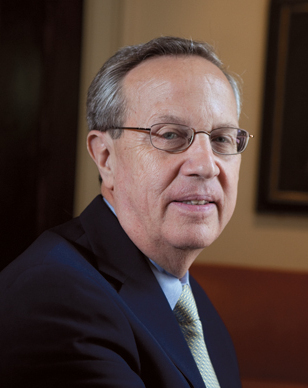 loading
loading
Q&A: Rick LevinStill buildingConstruction on campus.  View full image
Y: Times are tough and most of Yale’s construction plans are on hold, but many projects have been finished or started since 2008. How do you decide what to hold and what to advance? L: Times are tough, but let’s start by remembering that we have spent more than $4 billion on renovations and new construction since our tercentennial in 2001. Nonetheless, there has been a clear logic to the projects we started or completed since 2008. First, we finished constructing and renovating the buildings that were already in progress, such as Morse and Ezra Stiles Colleges. Second, we moved forward on projects for which we had gift funding. And, third, we found ways to do certain urgent projects with reduced scope and at reduced cost relative to our original plans. Y: What are the most important ones? L: There were half a dozen big projects set aside at the time of the financial crisis. The School of Management [SOM] and the Art Gallery were two. The biology building, Hendrie Hall, the School of Drama, and the new residential colleges were the others. All of these were in various stages of planning and design, and all were scheduled to go forward over the next few years. Thanks to the extraordinary efforts of the Art Gallery’s director, Jock Reynolds, we have been able to move forward and the renovated Old Art Gallery and Street Hall will open in December. Also, gifts for SOM have allowed the construction of its new campus to proceed. Y: Did you have any broader strategic reasons? For example, it’s widely believed on campus that SOM needs its new buildings in order to compete more successfully with other business schools. Did that make it a priority? L: There is no question that the superb new facility designed by Lord Norman Foster [’62MArch] will make the Yale School of Management far more attractive to prospective students. Y: The residential colleges are also going ahead. L: We still require more gifts in order to proceed with construction. But when the crisis hit, we had enough donor support to fund both the remaining design work and the preparation of the site. This allowed some important initiatives to proceed. For example, we renovated 493 College Street, next to Silliman College, enabling the relocation of the sociology department off the college site. We also created the new Center for Science and Social Science Information [CSSSI] in Kline Biology Tower—consolidating the Social Science Library and the Stat Lab (both previously on the college site) with the Kline Science Library. At a modest cost, we have created a spectacular space and state-of-the-art electronic classrooms. And we opened a new café on the ground floor of Kline Biology Tower. We now have more students eating lunch on Science Hill than in any single residential college. Y: What’s the status of the biology building, planned for Whitney Avenue north of the Peabody? L: Cesar Pelli’s fabulous design is completed, but in December 2008 I had to deliver the painful news to the Department of Molecular, Cellular, and Developmental Biology [MCDB] that we had put the project on hold. Restarting this project remains a very high priority because it is a necessary next step for many more renovations on Science Hill. Our 20-year plan anticipated using Kline Biology Tower as swing space for other science departments after MCDB moves to its new building. Physics, astronomy, evolutionary biology, and part of MB&B [the Department of Molecular Biophysics and Biochemistry] will cycle through Kline Tower while their buildings are renovated or replaced. Meanwhile, we have reinvigorated the faculty planning committee on Science Hill, and asked the committee to help us identify our highest-priority near-term needs. With their support and counsel, this summer we will begin renovating the research facilities in the Kline Chemistry Laboratory, and, over the next two summers, we will renovate classrooms and lecture halls across all of Science Hill. Addressing the condition of our teaching laboratories is another major priority, and we are currently examining alternative approaches. Y: What about the Hall of Graduate Studies? There have been complaints about the state of the building. L: We will have a great opportunity to renovate the offices and classrooms in HGS when SOM leaves its buildings on Hillhouse Avenue and moves to its new campus in a couple of years. Some departments on the central campus may be interested in relocating permanently to Hillhouse; others could move there temporarily while HGS is being renovated. Y: What’s your top fund-raising priority? L: Our top priorities are still the biology building, the new colleges, Hendrie Hall, and a new home for the School of Drama. These four projects, all put on hold in December 2008, comprise the menu I’m giving to our donors interested in facilities. Considering the magnitude of the financial crisis, I think it is remarkable that we have been able to proceed with the Art Gallery, SOM, 493 College, CSSSI, the Kline Café, Kline Chemistry Lab, and science classrooms. We are very fortunate that our alumni and friends have made it possible to accomplish so much in the last three-plus years.
The comment period has expired.
|
|